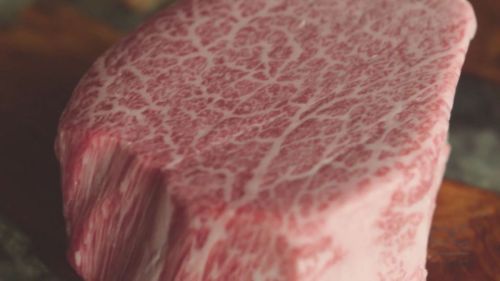Aokigahara is a forest that stretches northwest to Mount Fuji in Japan. It is called the Aokigahara Sea of Trees, the Mount Fuji Sea of Trees, or the Suicide Forest. It is very dark and mysterious, and its intriguing appearance is given by the densely growing trees, volcanic soil, and the stunning silence that reigns there. It is a beautifully situated place where, following designated trails, you can go hiking or even camp.
However, it has a not-so-good reputation as a place with an exceptionally high suicide rate. In this respect, the forest ranks second in the world, after the Golden Gate in San Francisco. There is even a superstition that whoever enters there will never return. However, this is only a superstition, so if you stick to the established rules, you can enter the Aokigahara forest, enjoy its charm, visit the caves there, and come back full of positive impressions.
It is located at the north-western foot of Mount Fuji, between Lake Sai and Shoji, part of the five Lakes of Fuji.
There is a theory that when looking at the forest from the top of the mountain, you can see the trees fluttering in the wind, which look like a waving sea - hence the name "Sea of Trees". The forest is also called the Mount Fuji Sea of Trees or the Suicide Forest.
It is part of a national park, a special protection area, included in the area of Mount Fuji, belonging to the UNESCO World Cultural Heritage - "Mount Fuji - an object of worship and a source of artistic inspiration.
The forest area is 30 square kilometers. Its base is hardened lava formed after the eruption of the Nagao parasitic crater belonging to the Fuji stratovolcano (a small cone on the slope of the large main cone), which took place in 864 (Great Jogan Eruption).
Over 1200 years, a virgin forest was created in the lava area, consisting mainly of conifers (Japanese pines, red pines, cypresses) and deciduous trees (Quercus crispula). This forest is considered pristine and has remained untouched by humans. The trees are abundantly covered with moss.
Visually, the forest seems larger than its surface suggests, because the area is characterized by a very high density of trees. The forest is very quiet and there is no wind.
Four of them: the Wind Cave, the Ice Cave, the Dragon Palace, and the Bat (Lava) Cave are open to the public. Designated trails are leading to them.
42 species of mammals have been confirmed to exist there. The Aokigahara area is characterized by a particularly high population density of the Asian black bear. Other mammals living there include Japanese macaques, deer, wild boars, Japanese weasels, Japanese squirrels, and others.
There is a myth that "you can't get out of Aokigahara Jukai once you enter it." However, the forest has marked trails on which you can travel safely. There are many information boards, camping sites, and a viewing platform. If someone strays from the trail, it may be difficult to get back, because the trees grow at a very high density, they are almost the same height, and the igneous ground makes walking difficult. However, such danger awaits unwary tourists in most dense forests.
You can enjoy picnics in the Aokigahara Forest, as well as tours with nature guides authorized by the city of Fujikawaguchiko.
There is a whole host of forest guards who ensure the safety of tourists. The guards are trained by the Ground Self-Defense Forces, and the course takes place in Aokigahara. When the course was created, it was difficult to find people willing to take it, because there was a belief that once they entered it, they would not come back.
The forest gained such a reputation in the 1960s, and the place was popularized by Seichō Matsumoto in his two novels: "Nami no Tō", in which he tells about the ghost of a woman who committed suicide in the Aokigahara forest, and "Kuroi jukai" - a story of lovers, who decided to take their own lives in this forest.
There has been a significant increase in the number of suicides since the publication of the book "The Complete Manual of Suicide" by Wataru Tsurumi in 1993. It is a compendium of knowledge about suicide that has sold over a million copies and describes the Aokigahara forest as the perfect place to end one's life.
An interesting fact is that this book can still be purchased in Japan. It was never considered dangerous and its further publication was never banned.
When entering the forest, they stretch strings and ribbons between the trees so that if they change their mind, they can safely return to the exit - the forest is full of such "decorations".
In the years 1998-2003, 442 cases of taking one's life were recorded there. Recently, the authorities stopped informing the public about the number of suicide victims in the forest, so as not to promote this place in any way.
However, there were boards with short advice, encouraging people to think about their own family, and containing the contact phone number of institutions that would immediately help a potential suicide.
Since 1970, groups of volunteers have been combing the forest in search of people who have already taken their own lives or are planning to do so. Over the years, many dead people have been found, but many have been saved.
In 2010, over 200 potential suicides were recorded entering the forest, 54 of them did the deed.
According to the local population, he is usually a man between 40 and 50 years old, highly positioned, and running a company. Suicide rates are said to increase in March, at the end of the fiscal year in Japan.
People most often take their own lives by hanging or overdosing on drugs.
In 2016, the rate in Japan was 18,5 per 100.000 people.
These are just legends that are supposed to convince people that the forest is a supernatural place. These devices function normally unless they are applied directly to igneous ground containing a large amount of iron.
The forest has appeared in anime and manga, film, literature, music, and video games. The 2015 film "The Sea of Trees" with Matthew McConaughey, Ken Watanabe, and Naomi Watts and the 2016 horror film "The Forest" take place in the Aokigahara forest.







